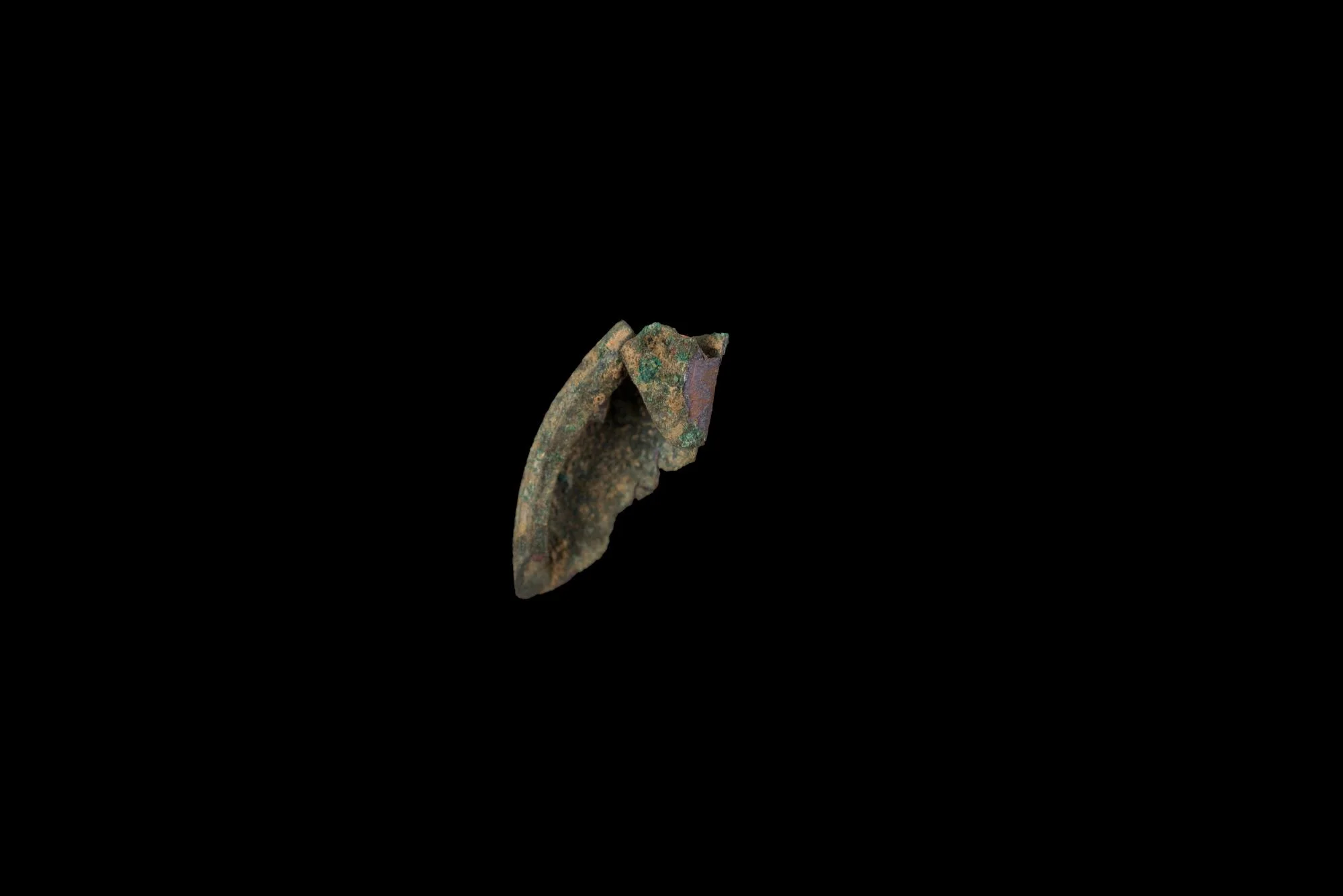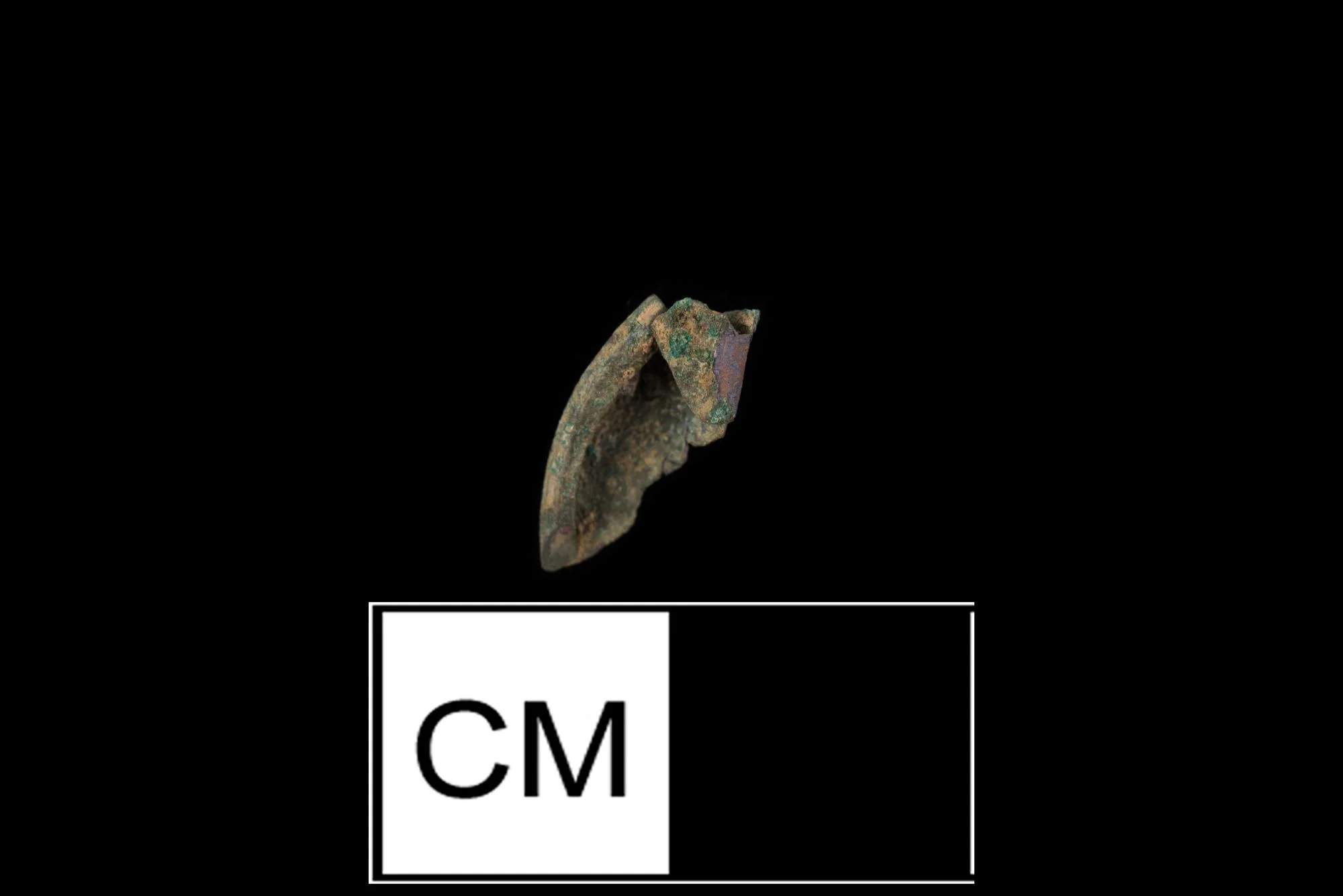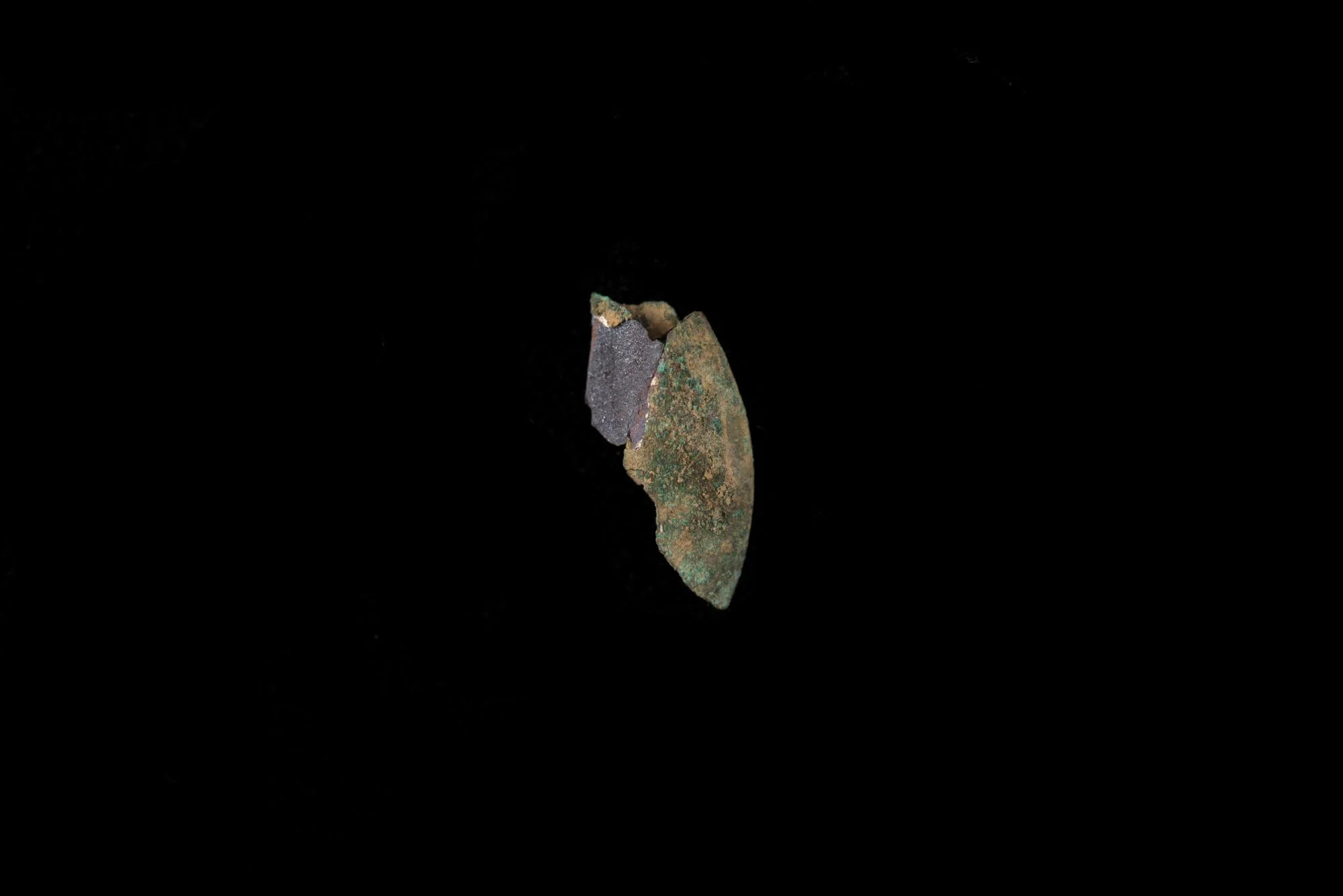Notes
This is the metal face, or front portion, of a two piece button. In this style of button, a disk of lathed bone with a beveled edge often served as a button back. The face of the button was commonly fashioned from a sheet of thin metal, usually a variety of copper alloy, which would be crimped onto the back along the beveled edge of the bone back.
This fragment demonstrates the way the metal button face was crimped over backings, as the crimped fold of metal is intact along the edge of the artifact.
In the eighteenth century, buttons came in a variety of shapes and sizes. Sometimes this variation can be used to identify which articles of clothing a button may have been used in the past. Unfortunately, the diameter of this button is too incomplete to suggest the article of clothing to which it was attached.
Object Type
Has it Been Conserved?
No
Where Was It Found?
Project Site: House for Families [more details]
Material
Manufacturing Technology
Form
Shape
Completeness
Date
Country of Origin
Dimensions
4.66mm x 1.68mm x 10.65mm (W x H x L)
Illustration shows object in comparison to the size of a quarter
Weight
0 gram(s)
Object Number
1834864
DAACS Number
1834864
Project: House for Families
The structure identified as the “House for Families” on the 1787 Vaughan plan likely housed the majority of the enslaved population living at the Mansion House Farm for much of the second half of the eighteenth century. The building was in existence from circa 1760 until it was demolished in late 1792 or early 1793. The archaeological evidence for the structure consisted of a brick-lined storage cellar (44FX762/40-47) measuring roughly six feet by six feet. Historically the cellar served as a handy trash receptacle once it ceased to be used for its original storage function, and through extensive excavation has yielded an extremely rich assemblage of household refuse. The analysis of these remains offers the opportunity to study important aspects of the daily lives of Mount Vernon's enslaved community.
See All Objects From this Dig


 Buttons
Buttons